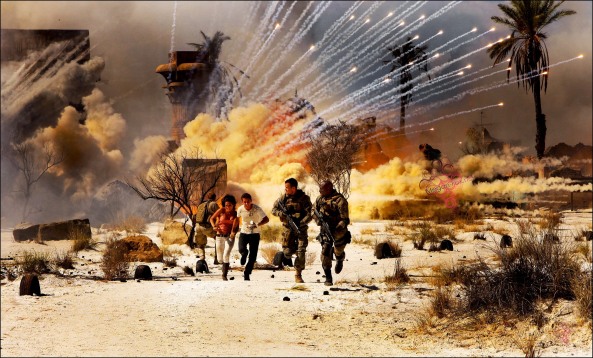Let “The Hobbit: An Unexpected Journey” be a lesson to those thinking of adapting a novel to the screen. “An Unexpected Journey” is the first of three movies spread out over the next two years designed to retell J.R.R. Tolkien’s “The Hobbit,” a children’s book and prequel to the Lord of the Rings series.
As it stands, Peter Jackson has made a lumbering, long, familiar and padded opening to a trilogy that I fear is equally as bloated. It falls prey to nerd-baiting, deciding the best way to adapt a novel is to be brutally faithful to the source, shoe-horning in meandering details and piddling small talk that do nothing to make the characters interesting or attempt to surpass the level of spectacle found in Jackson’s original LOTR franchise.
All this has little to do with Tolkien’s “The Hobbit” itself. Yes, it is a different story altogether, one that is more whimsical, lighter in tone and not as dense of a mythological tome. But “An Unexpected Journey” finds Jackson basically making a grandly proportioned cartoon, not least of all helped by the fact that in 3-D and 48 frames per second it looks like one (more on that later).
A far stretch from the visceral, but bloodless action of the original trilogy, here we see dwarves leaping and dangling from trees, trolls scratching their butts, giant rock titans fighting Transformers style and talking orcs that look like they have scrotums dangling from their chins. It’s chaotic, nonsensical action befitting a Dreamworks kids movie, not fantastical, just a CGI maelstrom that defies logic.
All of this somehow seems familiar. The initial journey from the Shire followed by set pieces across New Zealand mountains and on to Rivendell: we’ve been to all these places before, and none of it is as fresh or spectacular.
They feel obligatory, because neither Bilbo Baggins (Martin Freeman) nor the 12 dwarves he’s accompanying have much of a purpose for this quest; they’re just on an adventure.
Take Bilbo, who we get to know by watching him say “Don’t eat that” and “That’s an antique” over and over to the oafish dwarves who have without warning invaded his house and begun eating his food. He’s been informed through a lengthy backstory and obligatory flashback battle sequence that these 12 dwarves are embarking on a quest to reclaim their home, Erebor, from a dragon called Smaug. In order to do so, they need a stealthy hobbit who can sneak past Smaug. And after just a little prodding, he chooses to go because the plot needs to move forward.
But Bilbo doesn’t even really have much to do for a solid hour or more. He virtually disappears from sight amongst all the chases, flashbacks and side plots. His part involves cracking wise in front of some dumb trolls and of course Gollum (Andy Serkis, as deliciously funny and expressive in his motion capture ware as ever), which don’t really get the dwarves any closer to Erebor, but they’re supposed to be fun or funny I guess.
If this really is a faithful adaptation of the novel, the dialogue is awfully reductive and hardly literary. Much of it is low-brow and silly, but every once and a while Gandalf (Ian McKellen) has a fortune cookie line about bravery and the movie can call itself epic and profound.
There’s so much that feels weird and half-baked about “The Hobbit,” but most of all it just doesn’t look cinematic. 48 fps is designed to reduce the amount of strobing and blurring effects typically seen as the camera is quickly panning or tracking, and this can be very noticeable when watching a movie in 3-D. You’d arguably want this when you’re watching sports or other live TV. The typical line is that it’s “like looking through a window.”
But if everything in your movie is computer generated or you place your actors in front of movie sets, everything you see through that window is going to look fake. The movie is bursting with unnecessary amounts of light, the CGI looks strangely cheap, and the characters look like cardboard cutouts in front of a backdrop. If the blurring problem has gone away, it now looks like objects are awkwardly brushing up against the frame.
These have been comments that critics have made against 3-D itself for the longest time, and now Jackson has almost willfully amplified those problems for the sake of “accuracy.” It reflects the broader problem of “An Unexpected Journey,” which is that faithfulness to “reality” or to “source material” does not intrinsically make for a compelling movie.
2 stars



